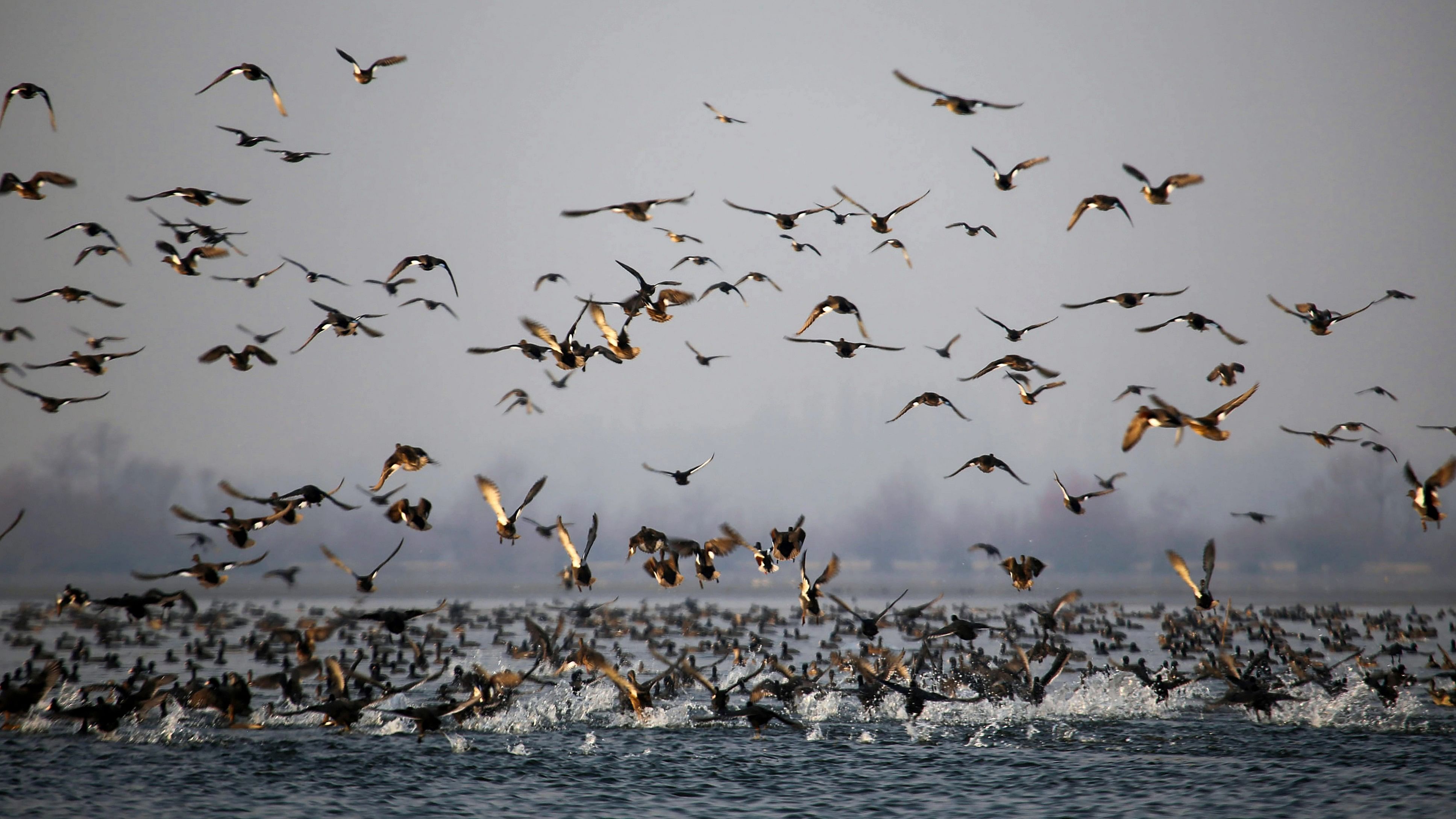
A flock of migratory birds flies over the Wullar Lake.
Credit: PTI Photo
Srinagar: Once a thriving haven for countless avian genus, Wular Lake - Asia’s second largest freshwater body - now faces a dire predicament as several species of global conservation are at the brink of extinction.
Rapid encroachment of the lake area, pollution and habitat destruction have made inroads upon the natural habitat of these majestic creatures. Among them, the migratory bird species, revered for their awe-inspiring journeys across continents, are now teetering on the edge of oblivion.
According to an official document five migratory bird species of global conservation in Wular Lake have been categorised as critically endangered. These species include White-bellied Heron, Pink-headed Duck, Baer’s Pochard and Kashmir Catfish.
Besides, the document has categorised species like Oriental Stork, White-headed Duck, White-winged Duck and Black-bellied Tern as endangered category while Black-necked Crane, Indian Skimmer, Marbled Teal, Asla and Common Carp have been tagged as vulnerable.
According to the document Wular Lake hosts 56 types of birds, 39 types of fishes and 20 plus different types of plants. The migratory birds visiting Kashmir travel from the colder areas of the world, flying over continents in flocks.
The Wular lake is one of the 42 Indian wetlands designated as a Ramsar site, which means lakes of international standard. Spread over Baramulla and Bandipora districts in north Kashmir, Wullar is a shallow lake with a maximum depth of 5.8 metres and covers 130 sq km, providing 60% of the Valley’s fish produce.
Known for water chestnuts and lotus stems, the lake is the lifeline of the 30 surrounding villages. For the past three years, more than Rs 300 crore has been spent on the lake’s conservation, and experts say results are reflecting on ground.
The Union Ministry of Environment, Forest and Climate Change has listed Wular lake and Hokersar wetland on Srinagar outskirts under the threat category.